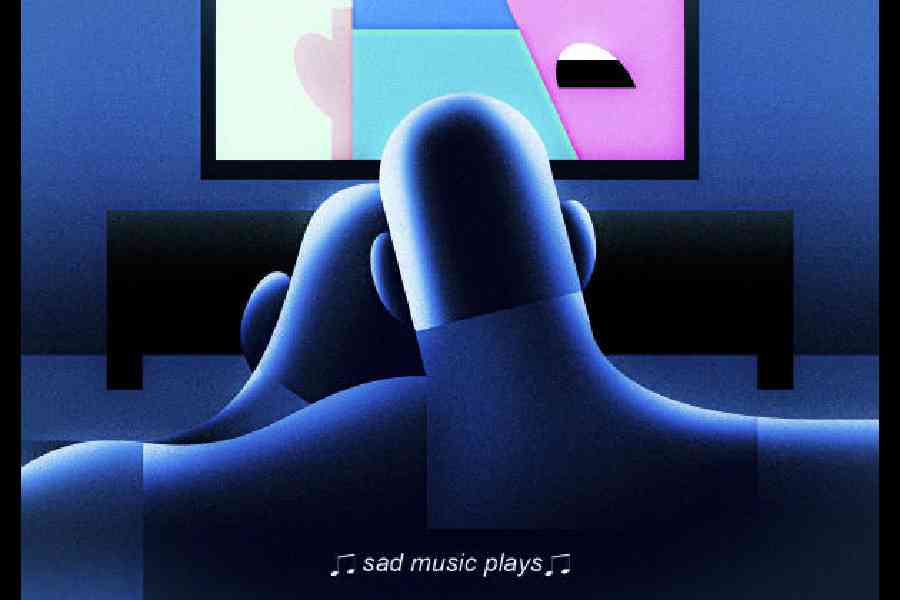What did he just say?”
Those are commonly uttered words in my home. No matter how much my wife and I crank up the TV volume, the actors in streaming movies and shows are becoming increasingly difficult to understand. We usually end up turning on the subtitles, even though we aren’t hard of hearing.
As video consumption shifts from movie theatres toward content shrunk down for TVs, tablets and smartphones, making dialogue crisp and clear has become the entertainment world’s biggest tech challenge.
“It’s getting worse,” said Si Lewis, who has run Hidden Connections, a home theatre installation company in Alameda, California, US. “All my customers have issues with hearing the dialogue...”
The garbled prattle is a problem tech and media companies are beginning to unravel with solutions such as speech-boosting software algorithms.
In big movie productions, professional sound mixers calibrate audio levels for theatres with robust systems capable of delivering a wide range of sound, from spoken words to loud gunshots. But when you stream that through an app on a TV, smartphone or tablet, the audio has been “downmixed”, or compressed, to carry the sounds through tiny, relatively weak speakers, said Marina Killion, an audio engineer at Optimus.
It doesn’t help that TVs keep getting thinner and more minimal in design. To emphasise the picture, many modern TVs hide their speakers, blasting sound away from the viewer’s ears, Lewis said.
There are also issues specific to streaming. Unlike broadcast TV programmes, which must adhere to regulations that forbid them from exceeding specific loudness levels. There are no such rules for streaming apps, Killion said. That means sound may be wildly inconsistent from app to app and programme to programme — so if you watch a show on Amazon Prime Video and then switch to a movie on Netflix, you may have to adjust your volume settings.
A speaker will help
Any owner of a modern TV will benefit from plugging in a separate speaker such as a soundbar, a wide, stick-shaped speaker. With pricing of $80 to $900, they can be more budget-friendly than a multispeaker surround-sound system, and they are simpler to set up.
I tried the Sonos Arc, which I set up in minutes by plugging it into a power outlet, connecting it to my TV with an HDMI cable and using the Sonos app to calibrate the sound. It delivered significantly richer sound quality, with deep bass and crisp dialogue, than my TV’s built-in speakers.
At $900, the Sonos Arc is pricey. But it’s one of the few with a speech enhancer, a button in the Sonos app to make spoken words easier to hear. It made a big difference in helping me understand the mumbly villain of the latest James Bond movie No Time to Die.
Dialogue enhancers in apps
Not everyone wants to spend more money to fix sound on a TV that already costs huge. Fortunately, some tech companies are starting to build their own dialogue enhancers into their streaming apps.
In April, Amazon began rolling out an accessibility feature, called dialogue boost, for a small number of shows and movies in its streaming app. You open the language options and choose “English Dialogue Boost: High.” I tested the tool in Tom Clancy’s Jack Ryan, the spy thriller with a cast of especially unintelligible, deep-voiced men.
At one point, I thought an actor said: “That’s right, you stuck the ring on her — I thought you two were trying to work it out.” The actor actually said, “Oh, sorry, you still had the ring on — I thought the two of you were trying to work it out.” Whoops.
In conclusion
The Sonos Arc soundbar was helpful for hearing dialogue without the speech enhancer turned on most of the time for movies and shows. The speech enhancer made words easier to hear in some situations, like scenes with very soft-spoken actors, which could be useful for those who are hearing-impaired. For everyone else, the good news is that installing even a cheaper speaker that lacks a dialogue mode can go a long way.
Amazon’s dialogue booster was no magic bullet, but it’s better than nothing and a good start. I’d love to see more features like this from other streaming apps.
NYTNS











